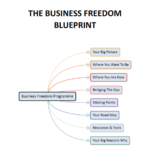Pricing is the final blog post in the Stop Selling Time for Money series but it probably is the most important.
I remember when I first started out my prices were way too low. I justified it to myself that I didn’t have a big fancy office or loads of staff or a well-established business so I could be cheaper than my competitors. Nearly everyone starts out with prices too low.
By the way, never compare your price to your competitors’ they will provide a different service to you. What you can do is compare the value you perceive your competitors give compared to what your feel you give to your clients.
Very quickly my business was a disaster because I ended up with loads of clients, due to the low price, and not enough time to do everything.
And as it turned out, most of my clients were only with me because of the low price and the most price sensitive clients were the ones who were the hardest work.
Get the Goldilocks price
I learned the hard way that if you set your prices too low and keep them there you will forever work harder than you need to, end up giving a poor service to your clients – because you need so many of them to get the income you need – and eventually go out of business, feeling exhausted.
On the flipside, if you set your prices too high you will leave yourself with a smaller pot of clients to choose from, normally having a niche is a good thing, but with your high prices comes high demands and expectations from your clients so be prepared to work just as hard if not more than if your prices were too low.
You need to find the goldilocks price for your services and products (I’ll just say services from now onwards but know I also mean products too) where it’s just right; it’s fair to your clients and it’s fair to your business.
They get a great service at a price they feel is value for money and you get time for other things in life other than work and get your ideal personal income.
The Biggest Consideration in Price is Value
We already looked at the value in the previous post on Selling Time is Cheap, Focus on Value so you should know what your clients value.
But what value do you want from your business? Or put another way how much do you want to pay yourself from your business?
The easiest and best way to price is by starting with the personal income you want from your business and reverse engineering your business figures up to revenue.
To get back to revenue from your personal income you will want to include:
- tax,
- a contingency fund (I like to allocate 20% of profits to keep in the company for future projects, team members and emergencies)
- fixed costs (those costs that you have to pay regardless of the number of sales you make and services you deliver)
- variable costs (those costs that you only incur with making sales and delivering your services)
You can then divide the revenue by the number of customers you have the capacity for to calculate the price you must sell at, with those number of customers, to reach your revenue target and therefore your desired personal income.
This also tests how viable your business model is and if any changes are required to your service, your capacity or the whole business model.
As long as your price represents value to your clients you will get your desired income.
This also gives you an interest in checking the numbers each month to make sure your profit, costs and revenue are on target.
You can get a free template here to reverse engineer your business numbers
Confidence with Pricing
You need to have the belief that your services are valuable to your clients and have the confidence that your price is set at the right place to still represent great value to them as well as you.
If after reverse engineering your numbers you realise you need to increase your prices but don’t have the confidence because you feel uncomfortable with the price you calculated, then ask yourself, ‘do I believe my services provide value to my clients at the price I’m uncomfortable with?’
If not you will need to make your services more valuable to your clients. You can go back to my previous blog post Selling Time is Cheap, Focus on Value on creating valuable packages.
If so you can baby step your way to building confidence with your price by adding an amount or percentage, say £10 or 5%, each time you make a sale until you get to your ideal price.
Most price resistance is in our own heads ‘they won’t to pay that!’ but we need to ask them first before making assumptions.
After a few baby step price increases, you may start getting consistent price resistance, say 10 prospective clients in a row turned you down because of the price. This is an indicator that you have gone too far with your price for your current market so bring your price back down to where it was when you were still converting prospects to clients.
For ongoing existing clients, you can get feedback from them to see what they value about your services and explain to them that you have been under pricing and the price will need to increase to continue to deliver the same great service and value they are used to.
It’s best to slowly work through your existing clients with initial price increases, rather than doing a blanket price increase all at once, to make sure you don’t lose your business overnight.
Some clients will be more sensitive to price than others so you may lose a few. It’s important to know which clients you really want to keep and which ones you are happy for them to leave.
The other thing you can do is to rework your service packages to introduce more value in order to get the price that you want. Get client feedback along the way to make sure you are on the right track.
Whatever you do, don’t calculate the price on an hourly or cost plus basis. Always calculate price from a value perspective.
I want to hear from you
I’d love to know how you get on with calculating your ideal price. Comment below
Also, write in the comments any questions or challenges you have with pricing and I will answer them for you.
Have a great day ahead! 🙂





